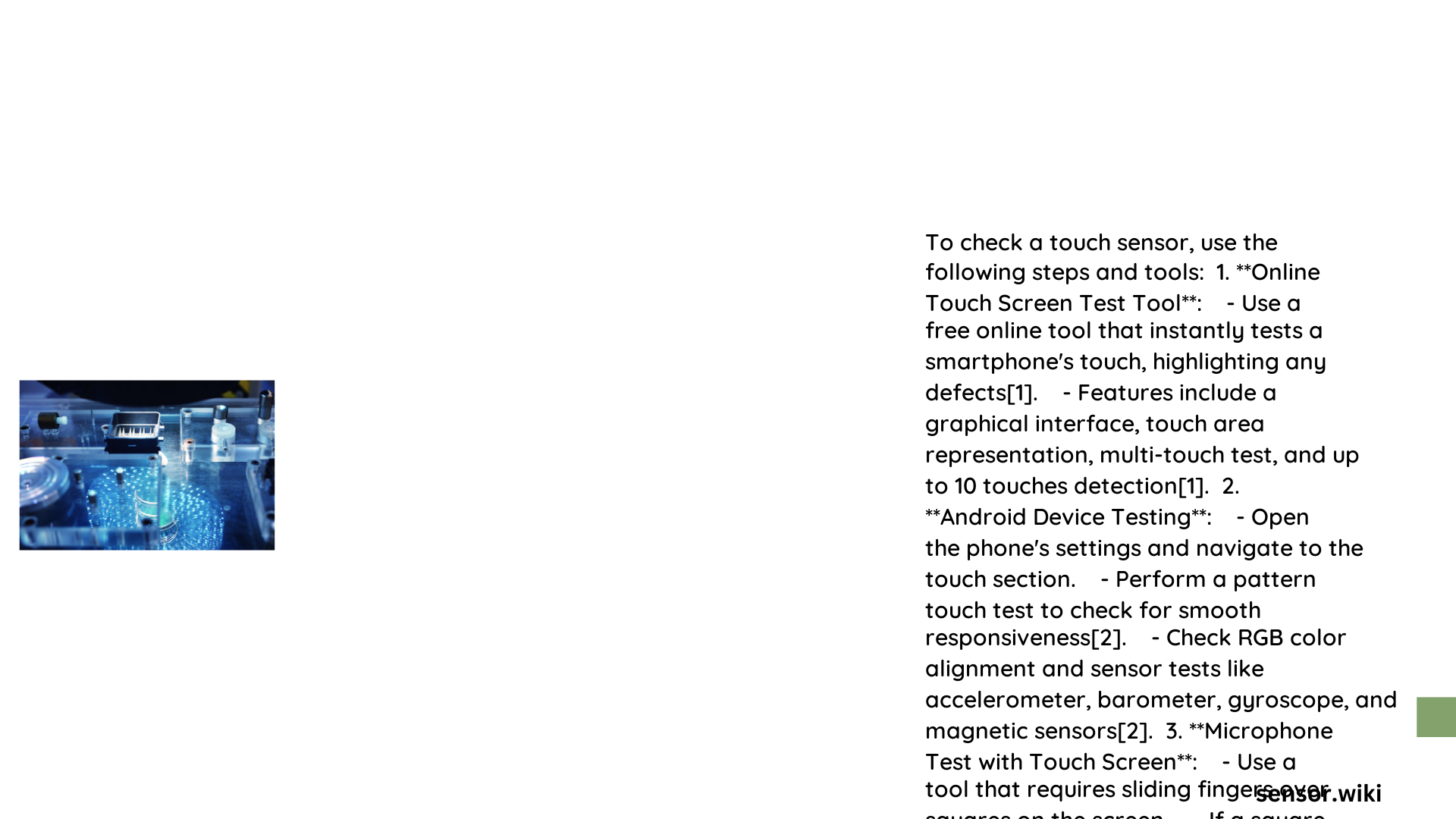Touch sensor checks are critical diagnostic procedures that validate the functionality, accuracy, and responsiveness of touchscreen interfaces across various electronic devices. These comprehensive evaluations involve systematic testing methodologies, precise measurement techniques, and specialized tools to ensure optimal performance, detect potential issues, and maintain high-quality user interaction standards. By implementing rigorous touch sensor checks, manufacturers and technicians can guarantee reliable and consistent touchscreen experiences.
What Are the Primary Objectives of Touch Sensor Check?
Touch sensor checks aim to accomplish multiple critical objectives:
- Validate Sensor Accuracy
- Measure precise touch coordinate detection
- Evaluate response time and sensitivity
-
Identify potential signal interference
-
Diagnose Performance Limitations
- Detect noise baseline variations
- Assess thermal drift impacts
- Evaluate multi-touch capabilities
How to Prepare for a Touch Sensor Check?

Equipment and Prerequisites
| Equipment | Purpose | Recommended Specifications |
|---|---|---|
| Precision Contact Tools | Point and Line Testing | 7mm diameter contacts |
| Windows Hardware Lab Kit | Comprehensive Testing | Latest Windows 10 Version |
| ESD Testing Equipment | Electrical Interference Validation | Adjustable Discharge Levels |
Preparation Steps
- Ensure device connection to AC power
- Enable “Test Signing Mode”
- Disable unnecessary touch digitizers
- Verify firmware and software updates
What Are the Critical Testing Methodologies?
Point and Line Testing Protocols
Effective touch sensor checks involve multiple testing approaches:
- Point Tests
- Align contact perpendicular to screen
- Target specific screen coordinates
-
Minimize parallax issues
-
Line Tracing Tests
- Trace predefined screen lines
- Evaluate accuracy and responsiveness
- Color-coded feedback (green/red)
How to Interpret Touch Sensor Check Results?
Performance Metrics
Key performance indicators include:
- Signal-to-Noise Ratio (SNR)
- Touch Detection Threshold
- Thermal Stability
- Multi-Touch Accuracy
- Response Time
Common Challenges
- Thermal drift compensation
- Noise interference
- Calibration complexity
- Environmental factors
What Tools Enhance Touch Sensor Validation?
Recommended Diagnostic Instruments
- Windows Hardware Lab Kit
- Precision Contact Devices
- Electrostatic Discharge (ESD) Testers
- Thermal Imaging Equipment
- Specialized Calibration Software
Best Practices for Comprehensive Touch Sensor Checks
Recommended Approach
- Establish baseline noise levels
- Perform systematic calibration
- Use multiple testing methodologies
- Document and analyze results
- Implement iterative improvements
Technical Considerations
Calibration Techniques
- Firmware-level adjustments
- Thermal compensation algorithms
- Noise filtering mechanisms
- Dynamic threshold adaptation
Cost and Time Implications
Testing Investment
- Basic self-tests: 2-4 hours
- Comprehensive validation: 1-3 days
- Equipment costs: $500 – $5,000
Conclusion
Touch sensor checks represent a sophisticated diagnostic process requiring technical expertise, specialized tools, and systematic methodologies. By implementing comprehensive testing protocols, organizations can ensure superior touchscreen performance and user experience.
